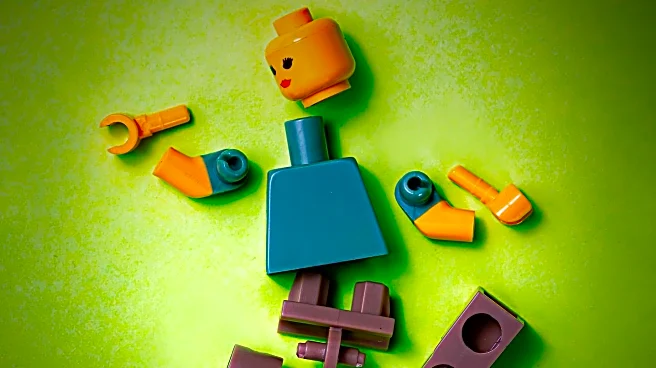What's Happening?
A mechanic working on a 1968 Mustang GT 390 4-Speed made a surprising discovery that the car was more than just a restoration project. The vehicle, known for its iconic role in the movie 'Bullitt' starring
Steve McQueen, was found to have original inspection stickers from when the mechanic had last worked on it decades ago. This revelation came as a nostalgic surprise, as the car had been maintained by its owner, an old friend of the mechanic, who had kept it in good condition despite life's interruptions. The Mustang, featuring a 390-cubic-inch FE V8 engine with 428 Cobra Jet heads, is set to undergo a complete overhaul to restore it to its former glory.
Why It's Important?
This story highlights the deep personal connections and historical significance that classic cars can hold. The 1968 Mustang GT 390 is not just a vehicle but a cultural icon, immortalized by its appearance in 'Bullitt.' For car enthusiasts and collectors, such vehicles represent more than their mechanical components; they are pieces of history and personal memory. The mechanic's rediscovery of the car underscores the emotional value and nostalgia associated with classic cars, which can drive the restoration market and influence automotive culture. This event also emphasizes the importance of preserving automotive heritage and the stories that come with it.
What's Next?
The restoration of the Mustang GT 390 will involve a thorough overhaul to ensure it is roadworthy and retains its historical integrity. The team plans to keep the car's original faded maroon paint, allowing it to tell its own story. Once restored, the car is expected to return to the streets, serving as a testament to its enduring legacy and the personal history it represents. This project may inspire other classic car enthusiasts to embark on similar restorations, further fueling interest in vintage automobiles.
Beyond the Headlines
The mechanic's experience with the Mustang GT 390 highlights the broader cultural and emotional significance of classic cars. These vehicles often serve as time capsules, preserving memories and connections to the past. The story also touches on the ethical considerations of restoration, balancing the desire to modernize with the need to maintain historical authenticity. As the classic car market continues to grow, stories like this one remind us of the importance of preserving not just the cars themselves but the personal and cultural narratives they embody.











